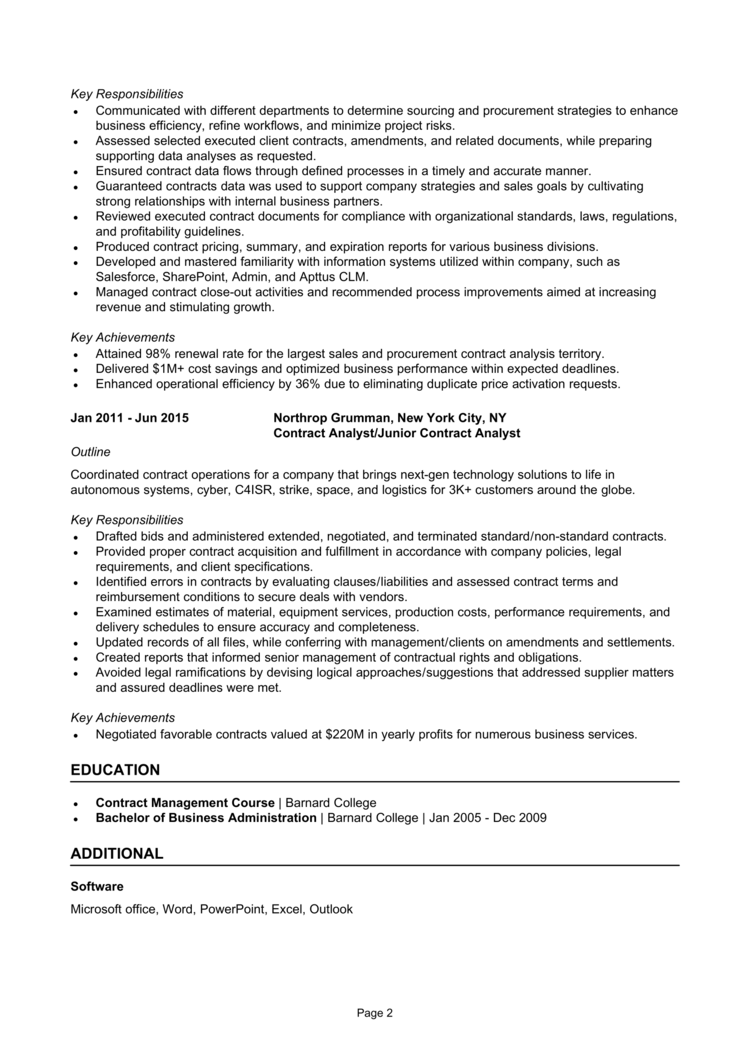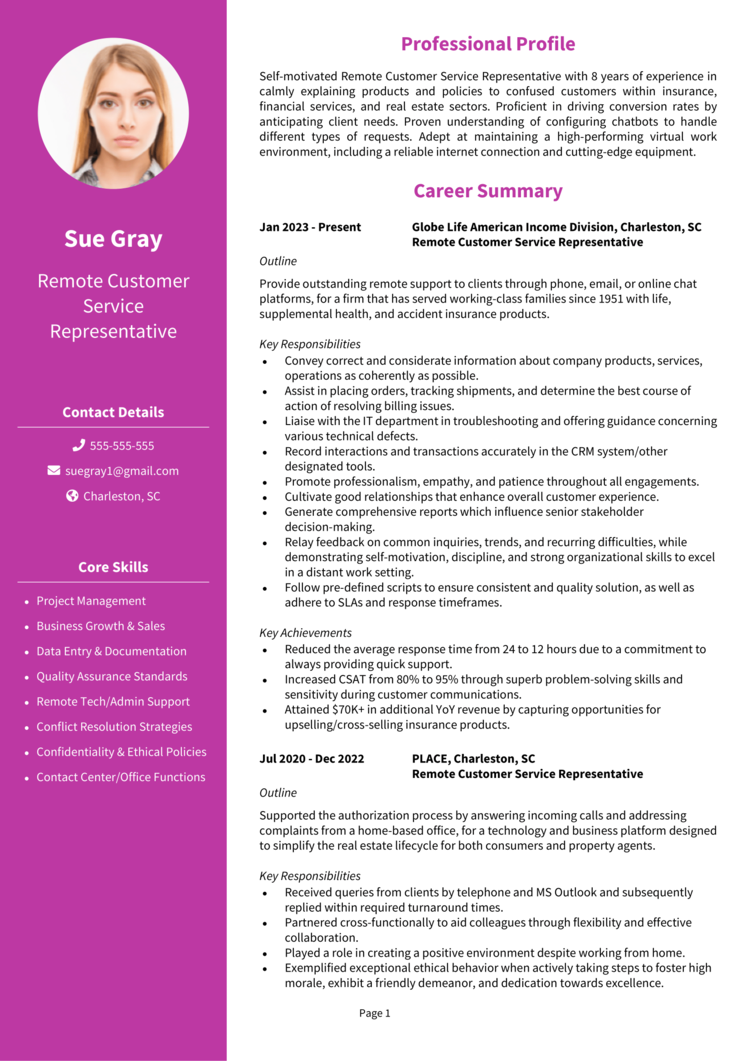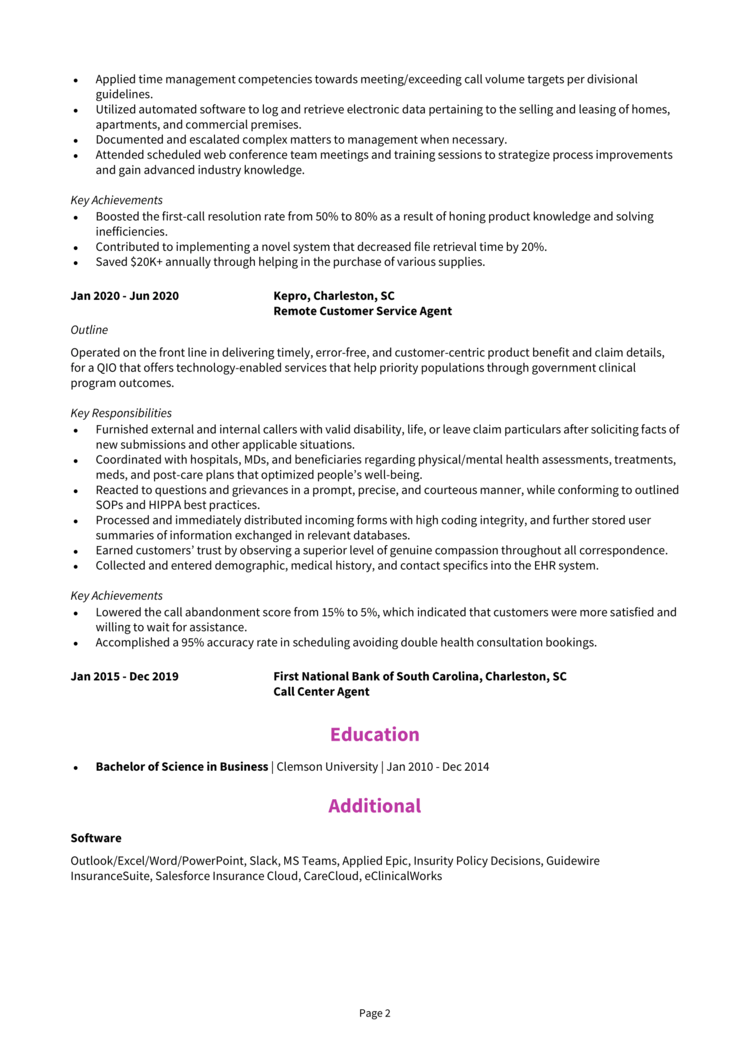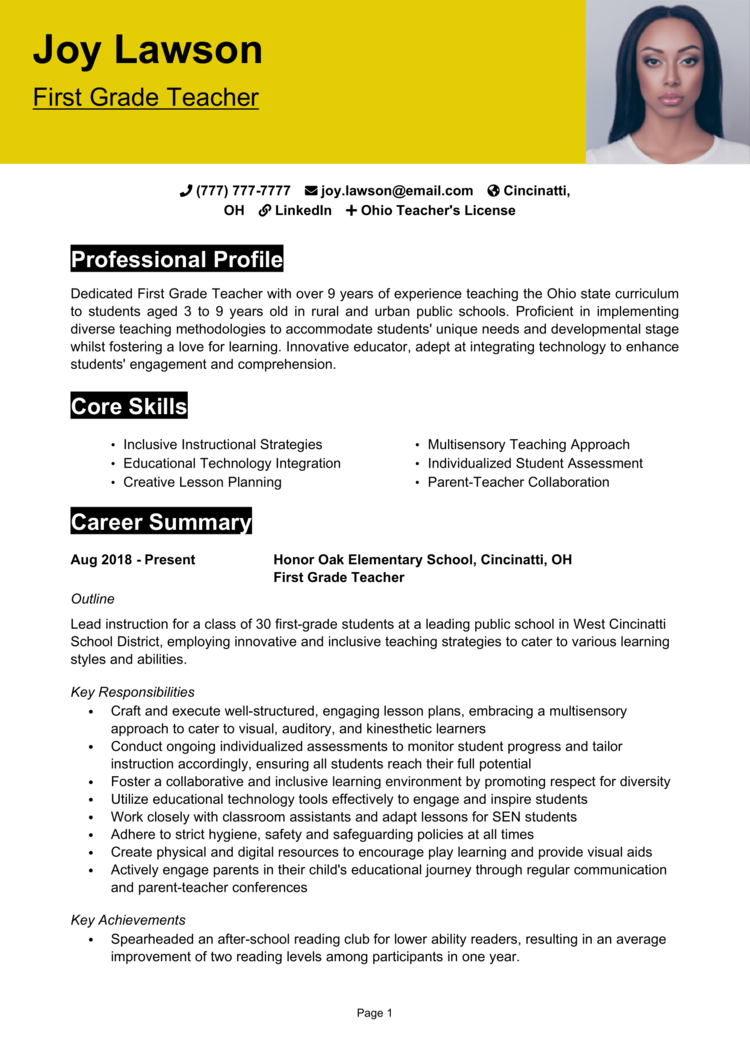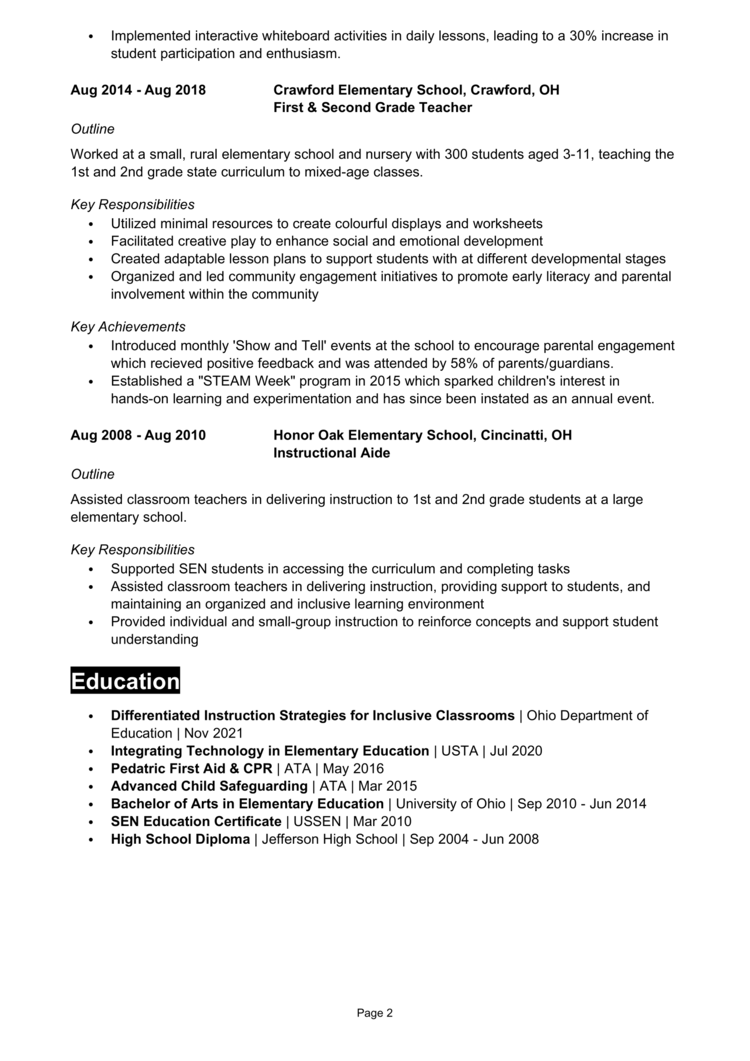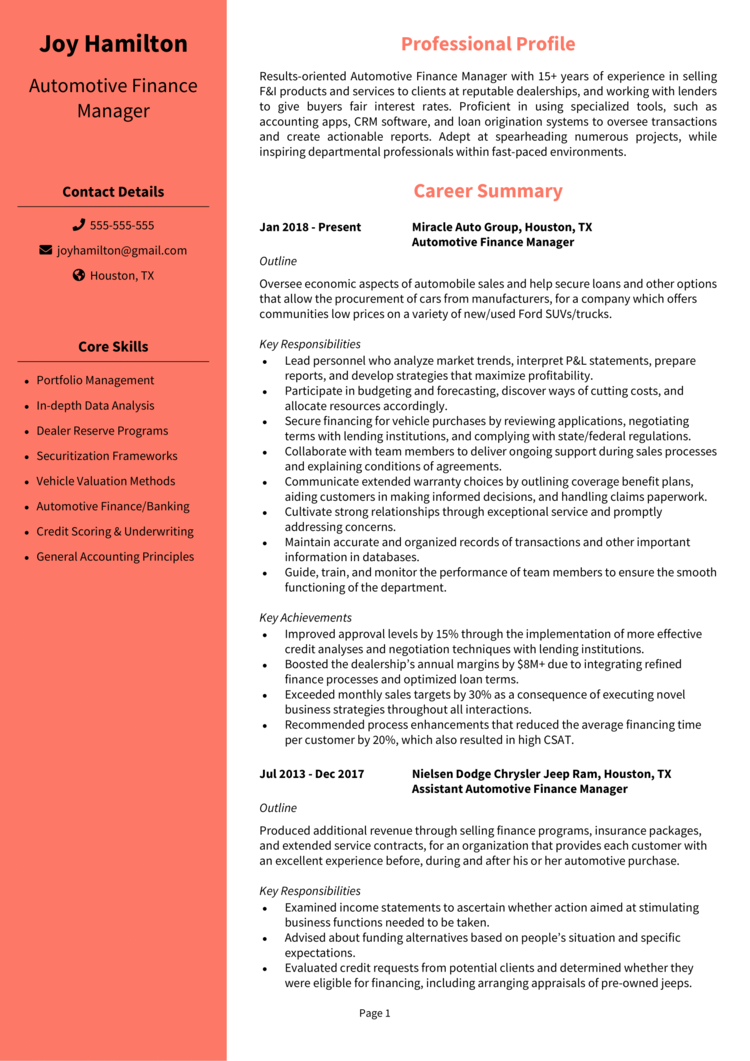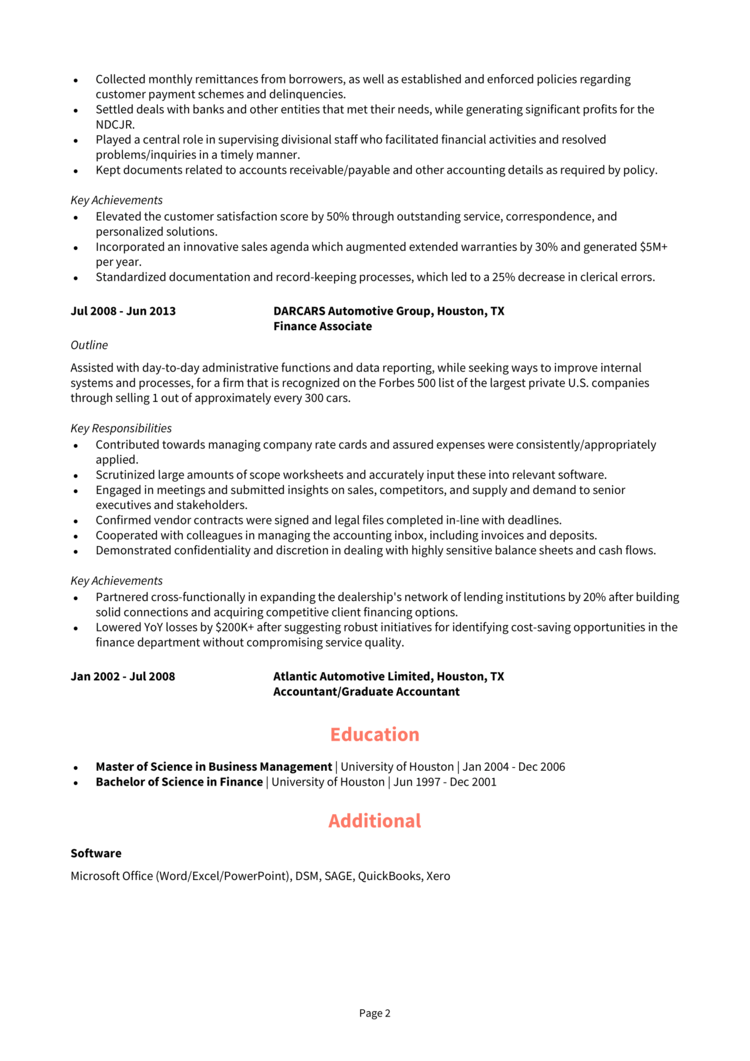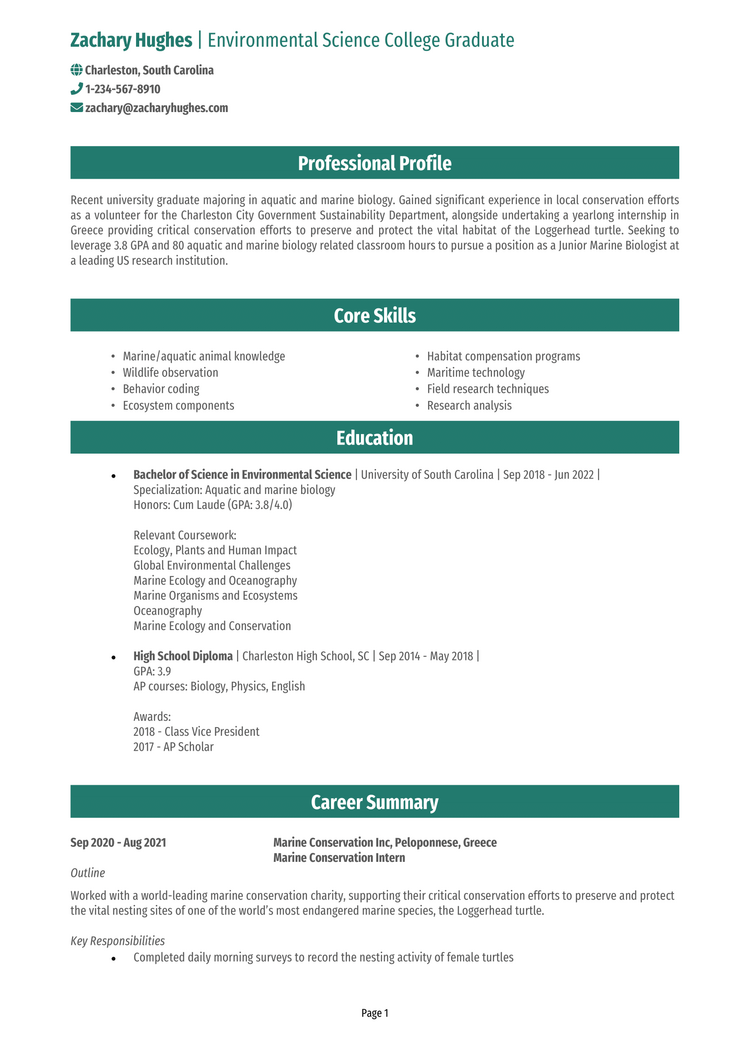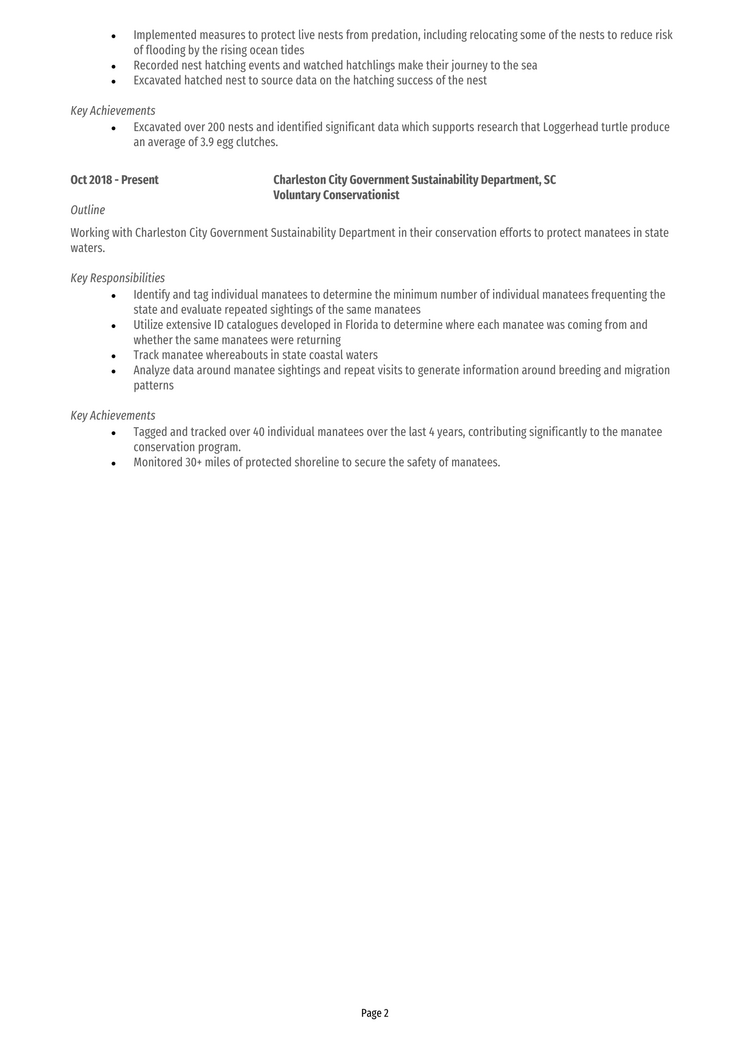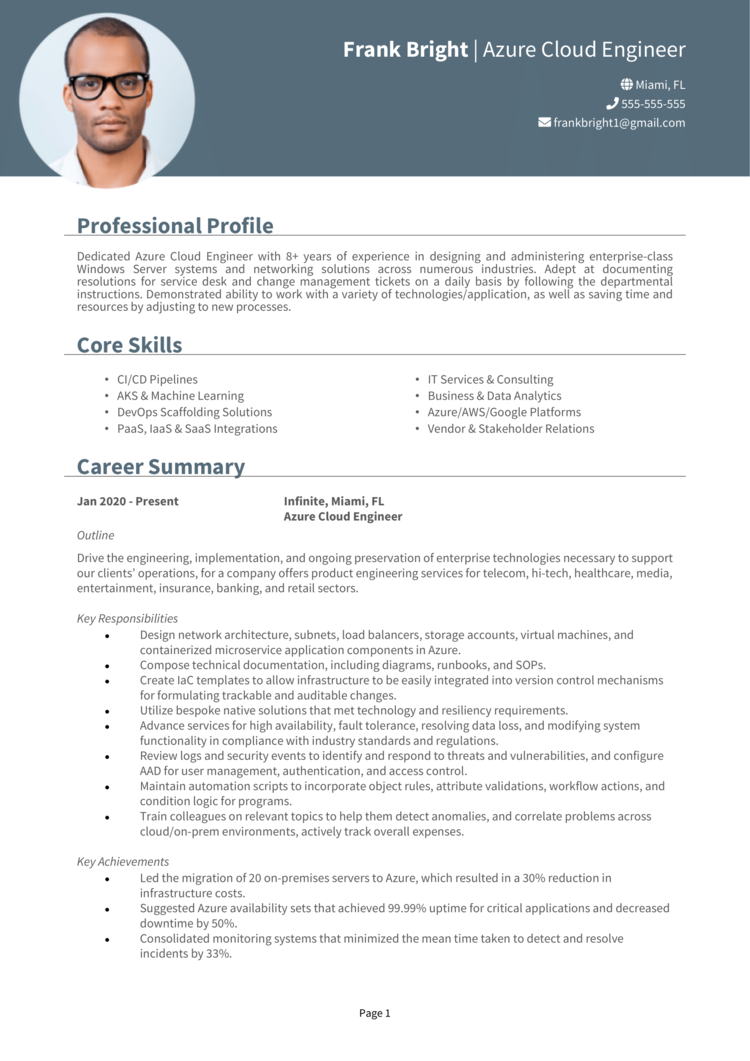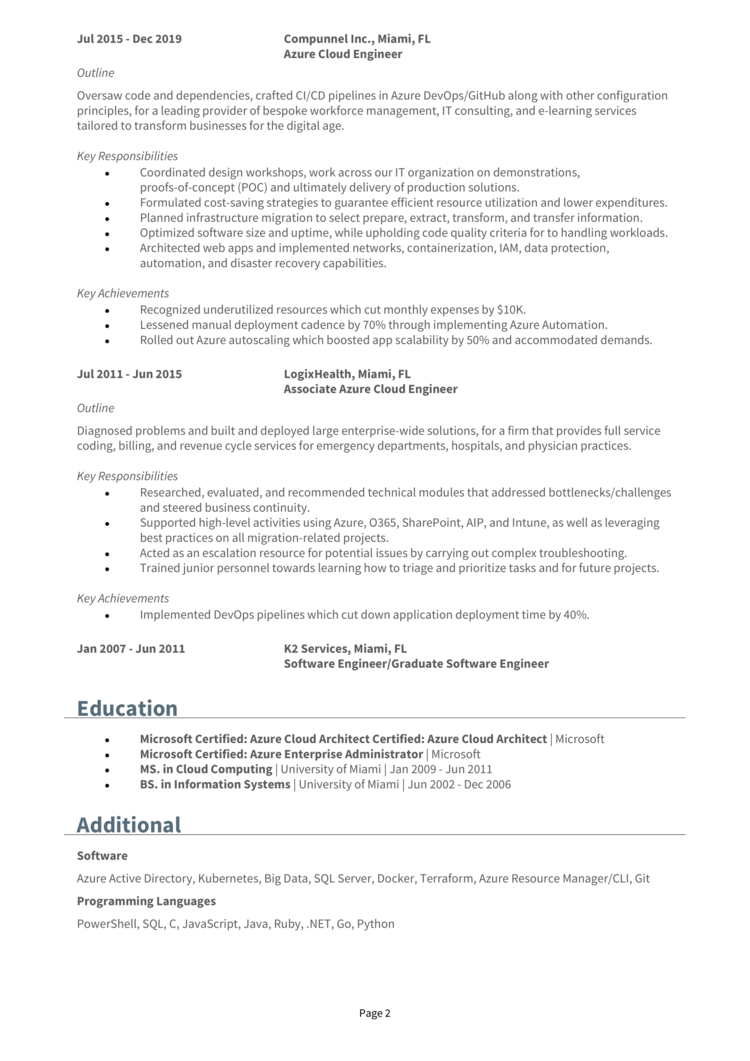If you’re searching for a job in the US, it’s important that you write your resume in US format.
Although resumes are largely the same across the globe, every region has style preferences that you need to adapt to if you want to get shortlisted for jobs.
This guide, along with 6 example resumes will show you the preferred resume format for the US and provide you with some helpful notes on how to write your own interview-winning resume for the US job market.
US format Admin resume
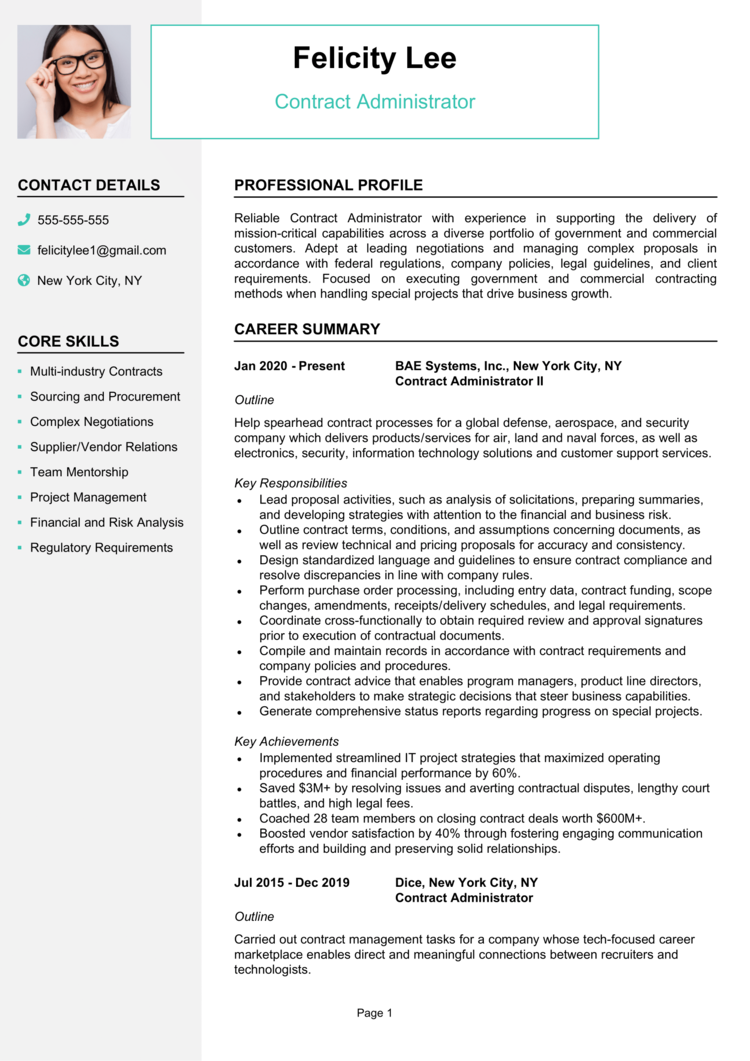
Tips on creating a strong admin resume…
Head with an eye-catching resume summary
Ensure that US recruiters and hiring managers are instantly impressed, by heading your resume with an introductory summary or personal statement which summarizes your skills and experience, like the sample resume above.
For best results, tailor this short paragraph to include key words from the job adverts you are applying for – this will make an instant first impression and encourage people to continue reading your resume.
Add a well-tailored core skills section
If you really want to ensure that busy recruiters and managers can quickly see your suitability, add a bullet pointed core skills section which reflects your most valuable skills and knowledge. This will create a snapshot that can be quickly seen from even a brief glance at the resume – ensuring the points aren’t missed.
Write powerful role descriptions
So that readers can understand your previous jobs and the value you added, make sure the roles are well structured and written.
Start with an outline sentence to give an overview of the job and the business of the employer.
List your office/admin responsibilities, being sure to detail who you interact with in the office, the skills you use, and how your work feeds into the business.
Finish each role with some quantified key achievements, to give employers an exact impression of how you have impacted the business positively.

US customer service resume
Tips on creating a strong customer service resume…
Head with an eye-catching resume summary
Ensure your customer service resume catches the attention of US recruiters and hiring managers by writing an introductory paragraph which explains why you are suitable for the roles you are applying for.
Tailor it to match the candidate requirements of the job you are applying to – and keep it brief as recruiters see hundreds of resumes every day and don’t want to spend too much time on each one.
Add a well-tailored core skills section
To ensure that your most in-demand skills are not missed – add a bullet pointed core skills section. The points will jump off the page and ensure that they are seen as soon as the resume is opened.
Pack this section full of essential customer service skills and qualifications.
Quick tip: If you worry that your spelling and grammar might not be correct, try using our quick-and-easy Resume Builder to eliminate the risk of making mistakes.
Write powerful role descriptions
Head each role with an introduction to build some quick context for readers, outlining the role and who you work/worked for.
Bullet point your responsibilities to detail your interactions with customer and duties you perform within each job.
Add some achievements to give examples of impressive results you’ve achieved in sales or service. Add numbers to give them scale if you can.
Resume US format – Teaching roles
Tips on creating a strong teaching resume…
Head with an eye-catching resume summary
To catch the attention of recruiters and head-teachers, add a punchy summary to the top of your resume, which summarizes your teaching skills and experience. It should be heavily tailored towards your target jobs so that recruiters can quickly see you are a suitable candidate.
Add a well-tailored core skills section
Make your most valuable skills stand out from the page by adding them to bullet pointed core skills section underneath your summary. This will help more US recruiters stick to your resume as they browse through the hundreds of applications in their inbox.
Write powerful role descriptions
Your role descriptions give you a great chance to prove the impact you make in the workplace.
Start each role with an intro that describes the institution you work for and overview of what/who you teach there.
Bullet point your responsibilities to show the skills you use and how you provide education over the long-term
Add achievements to prove impact such as improved standards or impressive exam results.

US Finance resume
Tips on creating a strong finance resume…
Head with an eye-catching resume summary
Hold the attention of recruiters and hiring managers by adding a powerful summary to the top of your resume. This is a short paragraph which summarizes your skill set and quickly shows readers a high-level overview of your suitability for the jobs you are applying to.
Add a well-tailored core skills section
Find out what the most important candidate requirements are for your target jobs and add your matching skills and knowledge to a bullet pointed core skills section. This will highlight your most valuable skills to US recruiters and help you get noticed as soon as the resume is opened.
Write powerful role descriptions
Start your roles with an intro to show readers who you work/worked for, and what the overall goal of each role is.
List your responsibilities in easy-to-read bullet points, so they can be easily skim-read by recruiters and hiring managers.
Round off each role with some impressive achievements that have had an impact on your employers or clients. Add figures to them if you really want to prove how valuable you are as an employee.
US Graduate resume
Tips on creating a strong graduate resume…
Head with an eye-catching resume summary
To create an impact whenever your resume is opened, write an elevator-pitch style opening summary, or personal statement. This is the place to make a big first impression by explaining why you are a suitable candidate for the roles you are applying for by giving a summary of your studies, skills and even experience if you have any.
Add a well-tailored core skills section
Ensure that your most important skills and knowledge aren’t missed by adding a core skills section under your summary. Research your target jobs thoroughly and add as many of the most frequently appearing candidate requirements as you can.
Write powerful role descriptions
If you have any work experience then add it into your career summary – if not, you can also add voluntary work or high school/college work placements.
Provide an intro outline for every role to show who you worked for and what the overall function of the job was.
Bullet point your responsibilities to showcase the skills you applied, and how they affected your employer.
If you made any impressive achievements in those jobs, add them to the bottom of your resume to show how you made a positive impact in the role.

US format IT resume
Tips on creating a strong IT resume…
Head with an eye-catching resume summary
Lead with a punchy paragraph at the top of your resume which summarizes all of your tech and non-tech skills to create a solid first impression.
Be sure to tailor this summary to the jobs you are applying for so that recruiters can instantly see how suitable you are.
Quick tip: If you worry that your spelling and grammar might not be correct, try using our quick-and-easy Resume Builder to eliminate the risk of making mistakes.
Add a well-tailored core skills section
Adding a bullet pointed list of core skills near the top the resume, ensure that recruiters can’t miss your most valuable skills.
Write powerful role descriptions
Head every role with an intro line to build context for readers, by outlining the company and role function.
List role responsibilities in concise bullet points to show how your technical skills are used to solve business problems.
Finish each role by listing some achievements that have had a positive effect on your employer.
Writing a resume in US format
The above examples should give you a good steer on how to create your own resume in US format.
Here are a few final tips to help…
Think before including a photo of yourself – US employers don’t need them to make hiring decisions, but they can add some personality to the document – especially if you work in a creative industry.
Keep it simple – US recruiters tend to be very busy, so make your resume easy to read by keeping the font and layout simple, and keeping the resume to around 2 pages in length.
Do your research – Find out what skills and experience US recruiters are looking for, so you can tailor your resume accordingly.
Good luck with your job search!
